You may have heard sayings such as “leaves of three, let it be” or “hairy vine, no friend of mine”, but identifying poison ivy, oak, and sumac plants can still be a challenge. Part of what makes it a challenge to identify these plants, is that they can grow in various forms including bushes, creeping ground vines, or climbing vines that are typically found wrapped around trees. All three plants contain the same allergen causing the same reaction to your skin so your doctor may call out any of the plants when identifying your rash. Your best defense against poison ivy, oak, and sumac is to learn what the plants look like and where they grow. If you do find yourself with a rash, Tecnu can help stop it in its tracks.
Where does poison ivy grow?
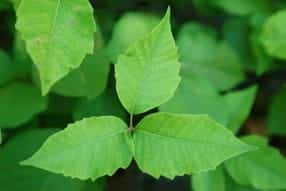
The most common of these three noxious plants, poison ivy, grows throughout most of North America, including all of the United States except California, Alaska, and Hawaii. Disguising itself as a groundcover, shrub, or climbing vine, poison ivy prefers “disturbed ground”, i.e. the perimeter of your backyard, along trails and walking paths, climbing trees & fences, and mixed in with your landscape.
To identify poison ivy, look for almond shaped leaflets that occur in clusters of three. Leaves are green in the summer, red in the fall, and the berries are usually grayish-white.

Where does Poison oak grow?
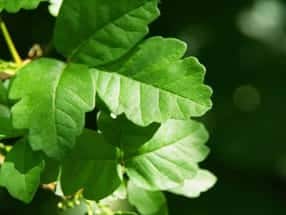
While poison oak may not be as common as poison ivy, it does come in two varieties: Eastern Poison Oak, and Western Poison Oak. To make things confusing, poison oak looks very similar to poison ivy with just a couple subtle differences; poison oak also grows in leaves of three, but has scalloped edges and is shaped like leaves from an oak tree.
Similar to poison ivy, poison oak also favors “disturbed ground”, and is often found in woodlands and Douglas fir tree forests. Poison oak likes both sunlight and shade, found growing as a shrub in the sunlight, or as a climbing vine under the shade of a tree. Colors of the leaves vary throughout the year ranging from bronze, brilliant green, yellow-green, or red in the fall. Berries on poison oak plants are typically greenish white or tan.
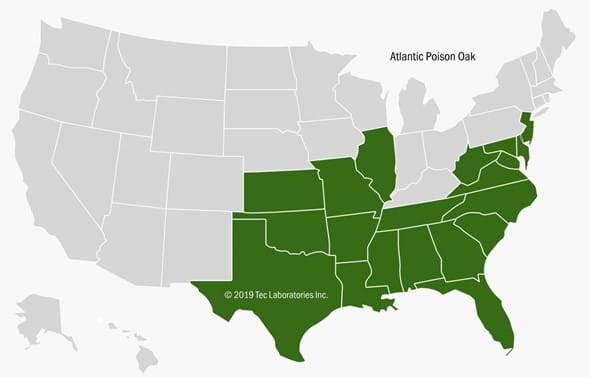
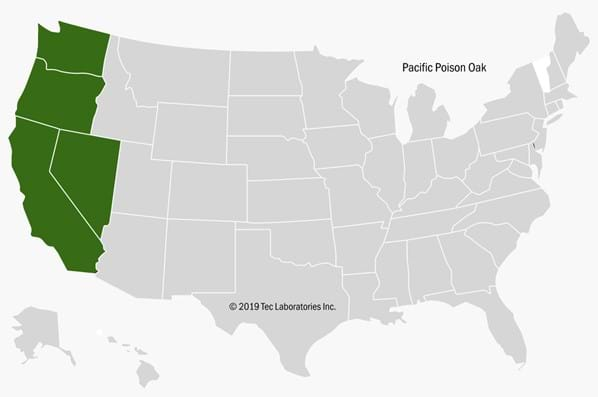
Where does poison sumac grow?

You’re unlikely to stumble upon poison sumac unless you live around or near a swamp or peat bog. Found primarily in the Eastern United States, poison sumac grows as a wooded shrub that resembles a small tree growing as tall as 20 feet.
The number of leaves on poison sumac can vary, but are always an odd number, typically ranging from 5-13 leaves per stem with a single leaf at the end of each stem. The stems of poison sumac are red in the spring, fading to brown in the fall and winter. These plants produce oval-shaped berries that are white to gray in color.
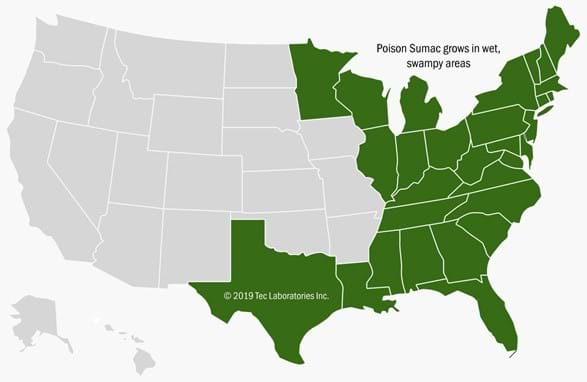
What is causing my rash in Hawaii?
While poison ivy, oak, and sumac do not grow in Hawaii, surprisingly, the skin of the mango tree produces the same rash-causing allergen, urushiol. Just like poison ivy, oak, and sumac, you want to remove urushiol from your skin if you have been in contact with it.
Why do these plants cause a rash?
Check out our resource page, How does poison ivy work to learn more!





